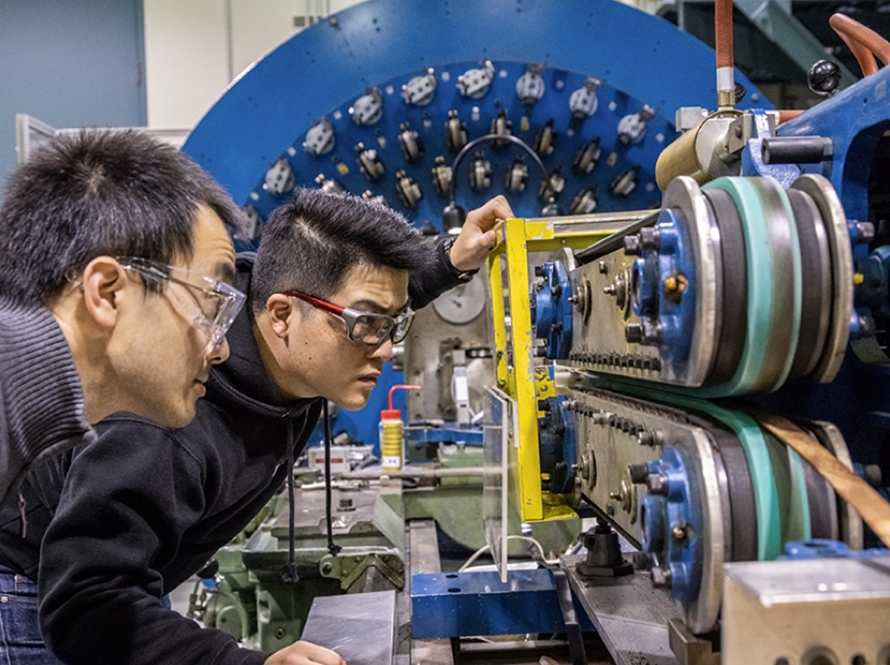
The LBNL Superconducting Magnet Program has a word-leading capability in the fabrication of Rutherford cables, the primary cable architecture used by accelerator magnets for the last 4 decades.
The HL-LHC Accelerator Upgrade Project resulted from years of research in superconducting magnet technology. The Superconducting Magnet Program at Berkeley Lab pioneered niobium-tin (Nb3Sn) accelerator magnets, which demanded new designs and fabrication techniques. This experience was an important element leading to the multi-lab proposal of the LHC Accelerator Research Program (LARP) in 2003. LARP prepared for future upgrades of the LHC on DOE’s initiative.
In 2015, the Office of High Energy Physics initiated the High-Luminosity LHC Accelerator Upgrade Project as a part of the luminosity upgrade (“HiLumi”) at CERN. The project introduces stronger interaction-region quadrupole magnets that focus the beams en route to the interaction points. The magnets are made using niobium-tin (Nb3Sn), a high-field superconducting material not previously used in an operational collider.

Researchers wind superconducting wire into cables for new magnets for the High-Luminosity Large Hadron Collider.
Fermilab leads the AUP, which includes experts and resources from Fermilab, Brookhaven National Laboratory (BNL), the Applied Superconductivity Center/National High Magnetic Field Laboratory, and SMP. The team is responsible for producing the Rutherford-style (flat, keystoned) cables, procuring the structural components from industry, and assembling and preloading the magnets using coils made by Fermilab and BNL.
Once the magnets are assembled and preloaded, they are sent to BNL for vertical testing. If they pass, they are shipped to Fermilab, where they are integrated into a CERN-provided cryostat kit and tested once again in their final horizontal cryostat to ensure they meet CERN requirements. After horizontal testing, the cryo-assembly is sent to CERN for integration into the LHC.
Throughout the project, the AUP team collaborates closely with the team from CERN to deliver the other half of the total complement of interaction-region quadrupoles. The HiLumi project is expected to be completed in 2029, resulting in a tenfold increase in the luminosity of the LHC.